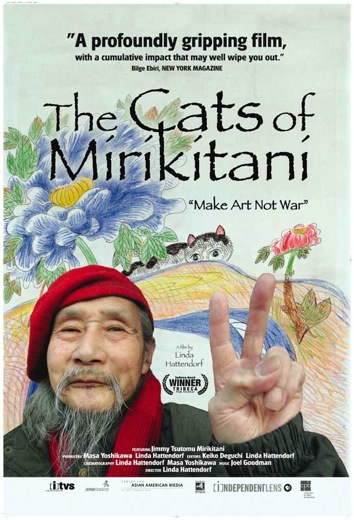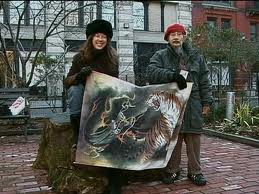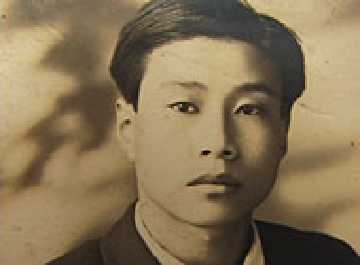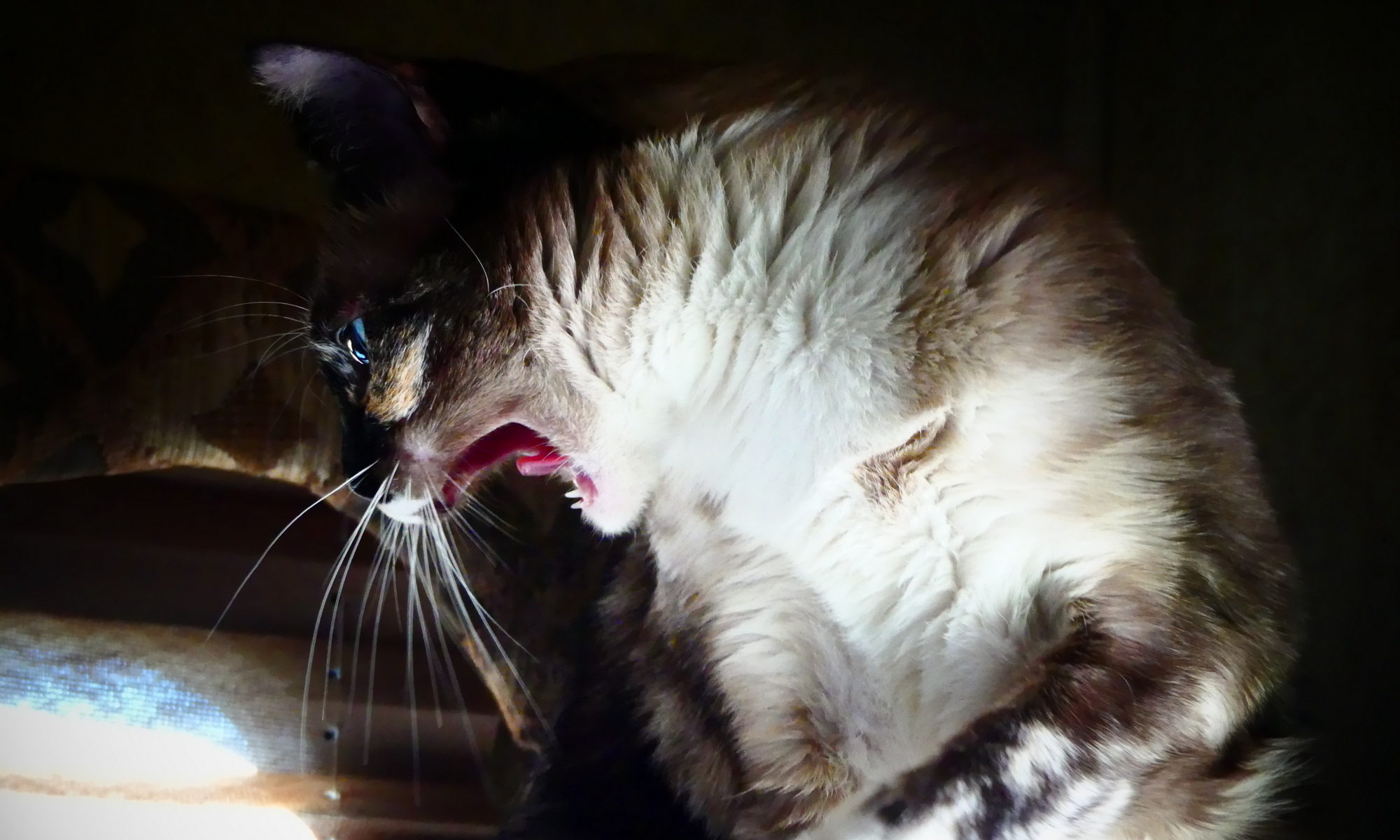“The cats of Mirikitani” – (2006, USA, 74 minutes – documentary)
Sometime around the summer of 2001, film editor Linda Hattendorf develops an interest in 80 year old homeless artist Tsutomu “Jimmy” Mirikitani who accepts to become the subject of her documentary project.
Jimmy’s subjects are mainly cats, tigers and the internment camps where he spent three and a half years, at Tule Lake, California during WWII.
Watch the trailer here:
After the September 11th attacks, which brought forth images reminiscent of the Hiroshima bombing with a city covered in ashes and dust, Hattendorf convinces Jimmy to leave behind his shopping cart and multiple layers of clothing, and move into her apartment.
Watching Jimmy’s reactions to the televised aftermath of the attacks, changing attitudes towards American Muslims and the military preparations to invade Afghanistan, we learn about his early life. Born in Sacramento in 1920, Jimmy went to live with his mother’s family in Hiroshima until age 18, by which time agressive militarism was growing throughout Japanese society. Even then, Jimmy saw himself as an artist and not a warrior.
He then returned to the U. S. to visit his sister. When executive order 9066 came into effect, Jimmy was incarcerated in the camp at Tule Lake California while his sister Kazuko was sent to Minidoka Camp in Idaho.

In the three and a half years he spent at Tule Lake, Jimmy witnessed misery, illness and death. A boy who loved cats used to follow Jimmy everywhere, asking Jimmy to draw for him.
This boy was one of many who did not survive incarceration.
Partly in protest against the government’s treatment of internees and I suspect also because he and others were manipulated by the camp’s administration, Jimmy became a “renunciant”, one who renounced his American citizenship. As he told Linda in conversations, “they” took his passport, they took everything. Something Linda was not I think prepared to understand, let alone accept.

As Linda continues her efforts to renew Jimmy’s social security card and find him housing, she discovers a letter sent to Jimmy, which he had never received. The government had reversed itself and reinstated his citizenship 50 years ago. He had no idea.
There is something about Jimmy Mirikitani which challenges certain notions.
When he lived on the street, he lived from his art, mostly the cat pictures. He would not accept charity and did not complain. His anger showed at times, particularly when watching bombs being loaded onto warplanes, but at no point did he ever come across as a victim, as feeling sorry for himself.

Jimmy’s story also puts into question what “freedom” and being American really mean.
It might be tempting to draw some generalizations about homelessness, and they would likely be romantic and unsustainable. In 2011, one in four children lives in poverty and the true depiction of where we stand as a society has not been… Televised.
Jimmy’s moving in with Linda and accepting her help does not contradict the earlier statement about charity: he did so because he liked her companionship, evidently, and also because she owned a cat Jimmy seemed fond of.
Roger Shimomura’s description of Jimmy’s approach to art is telling as well: he would complete one piece then move on to the next. A principle of survival, focusing on attainable goals and progressing step by step.
The documentary has a few more surprises in store, as Linda reunites Jimmy with long lost relatives such as Kazuko, his sister, and Janice Mirikitani, a poet laureate living in San Francisco, who also expresses her internment memories through her writings.
Eventually, Jimmy returns to Tule Lake, but you will want to watch the film to see what happens then.
“The cats of Mirikitani” gets 5 jellybeans.




A wonderfuly moving portrate of the human spirit. It restores my faith in the humanity of mankind.
When we all learn to love each other and care for one another as Linda did for Jimmy, the world will truly be a great place to live.
Until then “life is a b_tch and then you die.”
Agreed… A documentary I really wanted to recommend, evidently.